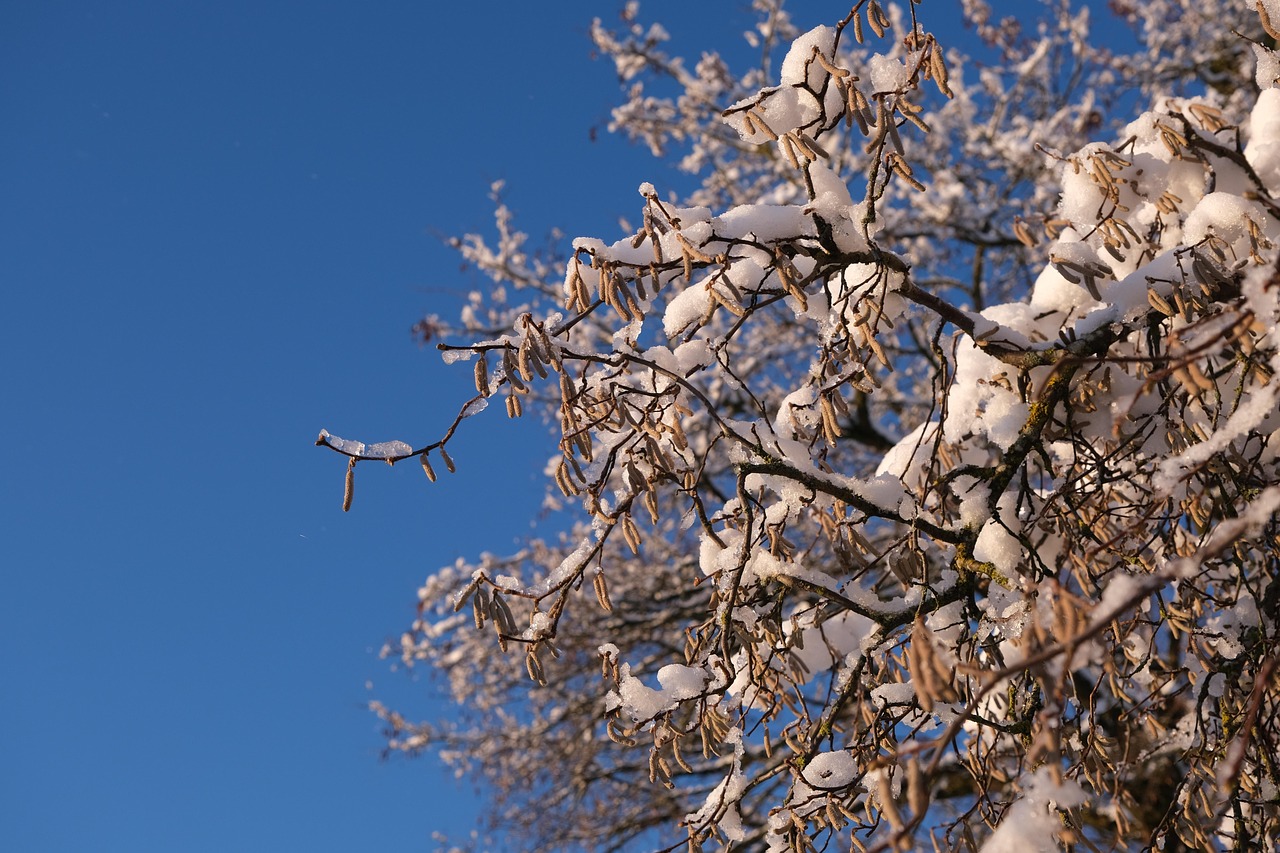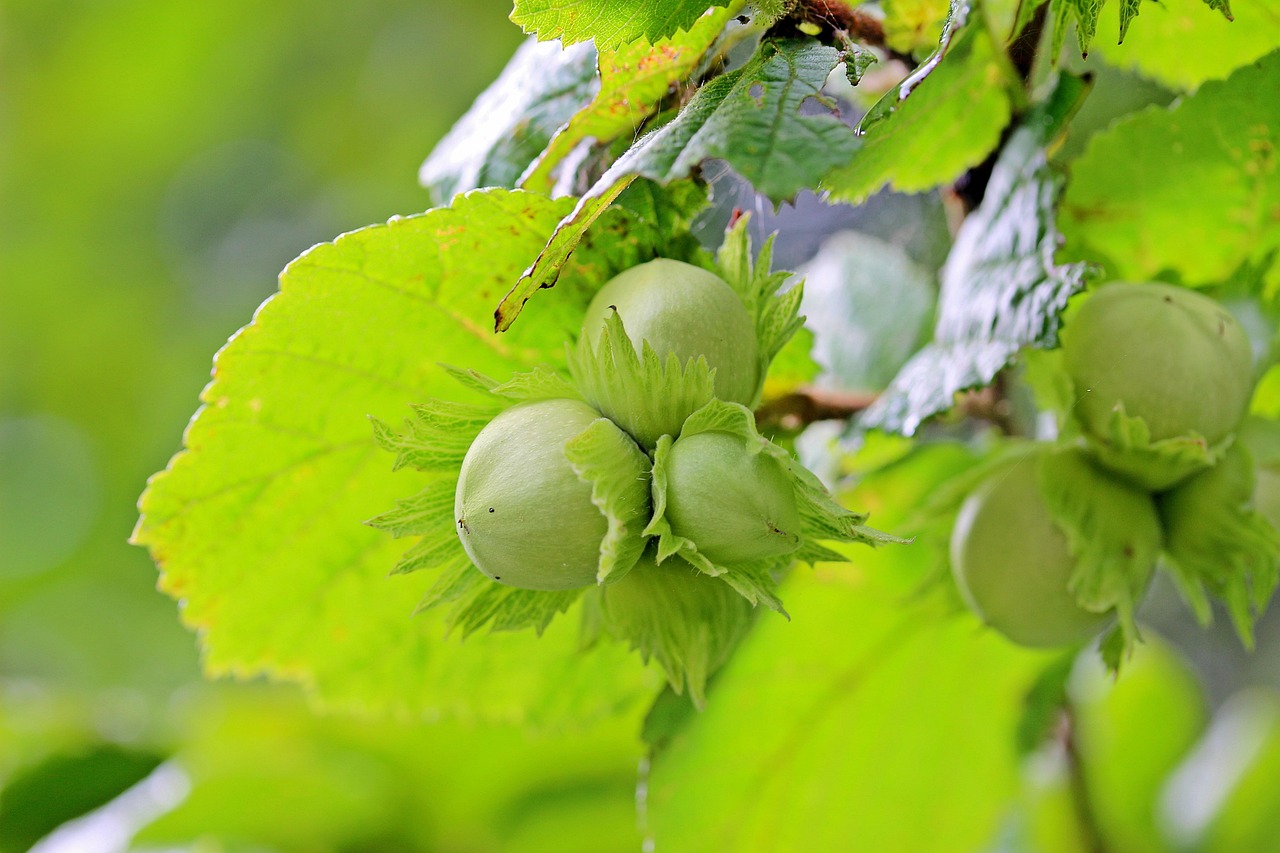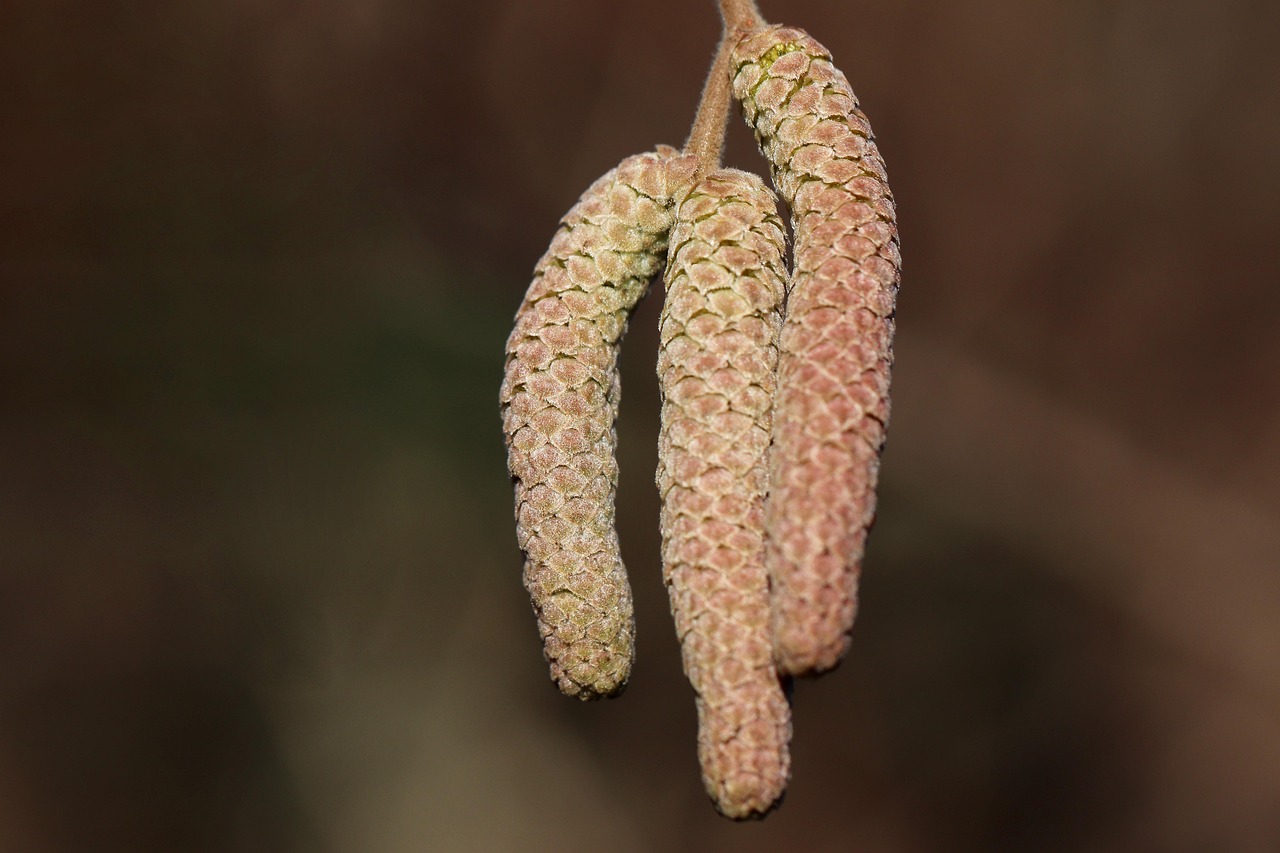Hazelnut trees typically grow at a moderate rate of about 12 to 24 inches per year, depending on the variety and growing conditions. They can begin producing nuts in three to five years after planting, making them a favorable choice for both culinary and garden use.
Understanding Hazelnut Trees
Hazelnut trees, scientifically known as Corylus avellana, are beloved for their delicious nuts and attractive foliage. These trees not only provide culinary delights but also enhance garden aesthetics. With their broad, rounded canopies and heart-shaped leaves, hazelnuts can serve as both a food source and a beautiful addition to landscapes.

The hazelnut tree is native to Europe and parts of Asia. It thrives in temperate climates where it can enjoy well-drained soil and adequate sunlight. The tree is not just valued for its nuts; it also plays a significant role in various ecosystems. Birds and small mammals often feed on the nuts, making it an essential component of wildlife habitats.
Growth Rate Factors
The growth rate of hazelnut trees can vary based on several factors. Understanding these factors can help gardeners and culinary enthusiasts make informed choices about planting and care. Here are some key elements that influence the growth rate:
- Soil Quality: Hazelnuts prefer loamy, well-drained soils rich in organic matter. Poor soil conditions can slow growth.
- Water Availability: Regular watering, especially in dry spells, supports healthy growth. However, overwatering can lead to root rot.
- Sunlight: Full sun exposure is ideal for hazelnuts. They require at least six hours of sunlight daily for optimal growth.
- Temperature: Hazelnuts thrive in temperate climates. Extreme temperatures can hinder growth and nut production.
- Pest Control: Protecting trees from pests and diseases ensures they grow at their full potential.
Growth Timeline
Understanding the growth timeline of hazelnut trees helps in planning their cultivation. Here is a general timeline for their growth stages:

| Age (Years) | Growth Stage | Notes |
|---|---|---|
| 1 | Establishment | Focus on root development and initial growth. |
| 2 | Vegetative Growth | Increased height and canopy development. |
| 3-5 | Nut Production Begins | First nuts may appear; yield increases with age. |
| 6-10 | Mature Growth | Full production potential reached; maximum yield expected. |
This timeline highlights the importance of patience in cultivating hazelnut trees. During the initial years, proper care is crucial to establish a strong foundation for future growth and nut production. Gardeners should be aware that while the tree may be slow to start, it rewards caretakers with bountiful harvests once fully mature.
Culinary Uses of Hazelnuts
The culinary applications of hazelnuts are vast and diverse. These nuts are celebrated for their rich flavor and crunchy texture. They are used in various dishes, from sweet to savory. Some common culinary uses include:
- Baking: Hazelnuts are often ground into flour or used whole in cakes, cookies, and pastries.
- Nut Butters: Hazelnut butter is a delicious spread that can be enjoyed on toast or blended into smoothies.
- Salads: Toasted hazelnuts add a delightful crunch to salads.
- Candies and Chocolates: Hazelnuts are a key ingredient in many confections, such as pralines and chocolate spreads.
As the demand for hazelnuts continues to rise, understanding their growth rate becomes essential for both gardeners and culinary enthusiasts alike. With proper care, these trees can provide delicious nuts for years to come.

Choosing the Right Hazelnut Variety
When considering planting hazelnut trees, selecting the appropriate variety is crucial for achieving optimal growth and nut production. Various hazelnut cultivars have different characteristics, including growth rates, nut quality, and disease resistance. Understanding these differences can aid gardeners in making informed decisions.
Popular Hazelnut Varieties
Here are some of the most popular hazelnut varieties suitable for culinary and garden use:
- Barcelona: Known for its high yield and quality nuts, this variety grows well in various climates. It is resistant to many diseases, making it a popular choice among growers.
- Ennis: This variety produces large, flavorful nuts and is well-suited for warmer climates. It is also known for its good shell integrity.
- Thornless: As the name suggests, this variety has no thorns, making harvesting easier. It produces medium-sized nuts and is favored for home gardens.
- Casina: Originating from Italy, this variety is known for its excellent flavor and adaptability to different soil types. It is particularly appreciated in culinary applications.
Each of these varieties offers unique benefits. Choosing a variety that aligns with your growing conditions and culinary needs can enhance your hazelnut experience.

Planting Hazelnuts
Proper planting techniques significantly impact the growth rate of hazelnut trees. Preparing the site and ensuring the right environment can lead to successful establishment and growth. Here are essential steps for planting hazelnuts:
Site Selection
Selecting the right site is critical. Hazelnuts thrive best in:
- Sunlight: Choose a location that receives at least six hours of direct sunlight daily.
- Drainage: Ensure the area has well-drained soil to prevent waterlogging.
- Protection: Consider planting in an area protected from strong winds, as this can damage young trees.
Soil Preparation
Preparing the soil before planting helps ensure healthy root development. Follow these steps:
- Test the soil pH, aiming for a range of 6.0 to 7.0.
- Add organic matter, such as compost or well-rotted manure, to improve soil fertility.
- Till the soil to a depth of at least 12 inches to promote aeration and drainage.
Planting Techniques
When planting hazelnut trees, consider the following techniques to promote growth:
- Spacing: Space trees approximately 15 to 20 feet apart to allow adequate air circulation and sunlight exposure.
- Depth: Plant trees at the same depth they were growing in their nursery pots. Avoid burying the trunk.
- Watering: Water thoroughly after planting to settle the soil around the roots and eliminate air pockets.
Caring for Hazelnut Trees
After planting, ongoing care is essential for healthy growth. Regular maintenance can significantly influence the growth rate and productivity of hazelnut trees. Key aspects of care include:
Irrigation
Proper irrigation is vital for hazelnut trees, especially during dry periods. Here are some tips:
- Water young trees regularly until established, typically within the first two years.
- Avoid overwatering, which can lead to root rot.
- Use mulch around the base of the tree to retain moisture and suppress weeds.
Nutrient Management
Nutrient management helps ensure trees receive necessary elements for growth. Consider the following:
- Fertilization: Apply a balanced fertilizer in early spring as new growth begins.
- Soil Testing: Conduct soil tests every few years to monitor nutrient levels and adjust fertilization accordingly.
Pest and Disease Control
Regular monitoring for pests and diseases is crucial for maintaining tree health. Some common issues include:
- Pests: Watch for aphids, spider mites, and filbert worms. Use organic insecticidal soap when necessary.
- Diseases: Fungal diseases like powdery mildew can affect hazelnuts. Ensure good air circulation by pruning crowded branches.
Caring for hazelnut trees can lead to robust growth and a fruitful harvest over time. With dedication and proper techniques, these trees can thrive in various environments.
Harvesting Hazelnuts
Once hazelnut trees begin producing nuts, the excitement of harvesting can begin. Understanding the right time and techniques for harvesting is essential for ensuring the best quality nuts. Proper harvesting methods can significantly impact both yield and taste.
When to Harvest
Hazelnuts typically reach maturity in late summer to early fall. The timing can vary depending on the variety and local climate conditions. Here are some signs that indicate when to harvest:
- Color Change: Mature hazelnuts change from green to a brown or tan color.
- Shell Hardness: The shell should feel firm and hard when gently squeezed.
- Dropping Nuts: Nuts may naturally drop from the tree when they are ripe. Collect them promptly to prevent spoilage.
Harvesting Techniques
Using the right techniques during harvesting will help preserve the nuts’ quality. Here are some methods for effective harvesting:
- Hand Harvesting: For small orchards or home gardens, hand-picking is a gentle method that minimizes damage to the nuts.
- Mechanical Harvesting: Larger operations may use specialized machinery designed to shake the nuts from the trees, collecting them efficiently.
- Ground Collection: After shaking or dropping, gather nuts from the ground using nets or buckets to avoid contamination.
Regardless of the method chosen, it is important to handle the nuts carefully to prevent bruising or cracking, which can affect the flavor and storage life.
Post-Harvest Processing
After harvesting, proper processing is crucial to maintain the quality of hazelnuts. This includes cleaning, drying, and storing the nuts effectively.
Cleaning Hazelnuts
Cleaning removes dirt, debris, and any remaining husks. To clean hazelnuts:
- Use a soft brush or cloth to wipe off any surface dirt.
- Rinse the nuts in cool water if necessary, but ensure they dry completely afterward.
- Avoid soaking, as this can lead to moisture absorption and spoilage.
Drying Hazelnuts
Drying is an important step to prevent mold and extend shelf life. Here’s how to properly dry hazelnuts:
- Air Drying: Spread nuts out in a single layer on a clean surface and allow them to air dry in a cool, dry place for several days.
- Dehydrator: Use a food dehydrator set at a low temperature to speed up the drying process.
Ensure that the nuts are completely dry before storing them to prevent spoilage.
Storing Hazelnuts
Proper storage is essential for maintaining freshness and flavor. Follow these guidelines for storing hazelnuts:
- Airtight Containers: Place dried hazelnuts in airtight containers to protect against moisture and pests.
- Cooled Environment: Store nuts in a cool, dark place or refrigerate them for longer shelf life. Freezing is also an option for extended storage.
- Check Regularly: Periodically check stored nuts for signs of spoilage or pests.
Culinary Innovations with Hazelnuts
The versatility of hazelnuts extends beyond traditional uses. Innovative culinary applications continue to emerge as chefs and home cooks experiment with this flavorful nut. Here are some exciting ways to incorporate hazelnuts into various dishes:
Savory Applications
- Pesto: Substitute hazelnuts for pine nuts in pesto recipes for a unique twist.
- Crusts: Use crushed hazelnuts as a crust on meats or fish for added texture and flavor.
- Sauces: Blend roasted hazelnuts into creamy sauces for pasta or vegetable dishes.
Desserts and Snacks
- Baked Goods: Incorporate ground hazelnuts into bread, muffins, or pancakes for added richness.
- Treats: Create chocolate-covered hazelnuts or nut clusters for delightful snacks.
- Smoothies: Blend hazelnut butter into smoothies for creaminess and flavor enhancement.
The culinary possibilities with hazelnuts are endless. As more people discover their unique flavor profile, the demand for these nuts continues to grow, making them an essential ingredient in both home kitchens and professional culinary settings.
Environmental Benefits of Hazelnut Trees
Beyond their culinary uses, hazelnut trees offer several environmental benefits. Planting these trees contributes positively to local ecosystems and can enhance garden biodiversity. Here are some of the key environmental advantages:
- Soil Erosion Control: The root systems of hazelnut trees help stabilize soil, reducing erosion, especially on slopes and hillsides.
- Carbon Sequestration: Like all trees, hazelnuts absorb carbon dioxide from the atmosphere, helping to mitigate climate change.
- Wildlife Habitat: Hazelnut trees provide food and shelter for various wildlife species, including birds, insects, and small mammals.
- Pollinator Support: The flowers of hazelnut trees attract pollinators such as bees, which are essential for maintaining healthy ecosystems.
Incorporating hazelnut trees into landscaping or agroforestry systems can create a sustainable approach to gardening and farming. Their multifaceted role in the environment showcases the importance of integrating productive plants into our ecosystems.
Market Trends and Economic Impact
The demand for hazelnuts has been increasing in recent years, driven by their popularity in various culinary applications and health benefits. Understanding market trends can provide insights for growers and enthusiasts alike.
Rising Popularity
Hazelnuts are increasingly featured in health food products due to their high nutritional value. They are rich in healthy fats, vitamins, and antioxidants. As consumers become more health-conscious, the demand for hazelnuts in snacks, spreads, and baked goods continues to grow.
Economic Opportunities for Growers
The expanding market for hazelnuts presents economic opportunities for both commercial farmers and home gardeners. Here are some considerations:
- Direct Sales: Farmers can sell fresh hazelnuts directly to consumers through farmers’ markets or local grocery stores.
- Value-Added Products: Creating products like hazelnut butter or meal can significantly increase profit margins.
- Sustainable Practices: Adopting eco-friendly practices can appeal to environmentally conscious consumers and promote long-term profitability.
By understanding market trends and consumer preferences, growers can make informed decisions that benefit both their livelihoods and the environment.
Cultivating Hazelnuts in Different Climates
Hazelnuts can be grown in various climates, but they have specific requirements that must be met for successful cultivation. Understanding how to adapt growing practices based on regional climates is crucial for optimal growth and production.
Cool Temperate Zones
In cooler regions, such as parts of the Pacific Northwest, hazelnuts thrive due to their preference for temperate climates. Here are tips for growing in these areas:
- Select cold-hardy varieties to withstand harsh winters.
- Ensure adequate drainage to prevent winter root damage.
Warmer Climates
In warmer areas, such as southern regions of the United States, specific care must be taken to ensure successful growth:
- Choose heat-tolerant varieties that can withstand higher temperatures.
- Implement mulching techniques to retain soil moisture during hot months.
By adjusting cultivation methods based on local climate conditions, growers can enhance their chances of successful hazelnut production.
Conclusion
The growth rate of hazelnut trees is an important aspect for both culinary enthusiasts and gardeners. With moderate growth rates and early nut production potential, hazelnuts offer a rewarding experience for growers. Selecting the right variety, understanding planting techniques, and ensuring proper care are essential steps toward successful cultivation.
The culinary versatility of hazelnuts further enhances their appeal. From baked goods to savory dishes, these nuts contribute unique flavors and textures that many enjoy. Their environmental benefits add another layer of value, making them a wise choice for sustainable gardening practices.
As demand for hazelnuts continues to rise, understanding market trends can help growers take advantage of economic opportunities. With proper knowledge and care, hazelnut trees can be a fruitful addition to any garden or farm, providing delicious nuts and contributing positively to the environment.
Whether you are an aspiring gardener or a culinary enthusiast, embracing the journey of growing hazelnuts can lead to both personal satisfaction and delightful culinary creations.
